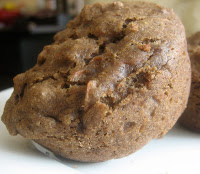
Tofu is a great vegetarian source of protein. But did you know that a half-cup serving of firm tofu contains about 227 mg of calcium or about 22% of the RDA? Dairy is not the only good source of calcium out there! It is also a good source of B vitamins, providing lots of usable energy for you all day long.
In addition to being great sources of protein, calcium, and B vitamins, tofu has profound cardiovascular benefits. Regular intake of soy protein can decrease total cholesterol by 30%, lower LDL (bad cholesterol) levels by as much as 35-40%, lower triglyceride levels, reduce the tendency of platelets to form blood clots, and possibly even raise levels of HDL (good cholesterol).
There is some controversy surrounding soy. Soy can be allergenic so be sure to delay introducing it to your little one until 12-18 months. Monitor any food allergy symptoms, such as diaper rash, runny nose, irritability, constipation or diarrhea. There is some debate as to whether or not soy causes hormone-sensitive cancers, such as enodmetrial, breast, and ovarian cancers, due to its estrogen-like components. This is problematic when soy is eaten in a highly processed form-such as added soy protein isolate to processed foods. Eat soy in its purest forms, such as edamame, tofu, and tempeh.
Be sure to buy organic tofu. Soybeans are one of the top genetically modified foods (along with corn, canola oil cottonseed oil, potatoes). Genetically modified foods not only wreak havoc with human health but also the health of the planet. You don't want your kids to be round-up ready, do you?
Indian Curry Tofu SaladThis salad is similar to an egg salad.
Ingredients- 4 tablespoons plain yogurt
- 2 tablespoons organic mayonnaise or vegannaise
- 2 tablespoons mango chutney
- 3 teaspoons curry powder
- 1/2 teaspoon salt
- Freshly ground pepper, to taste
- 1 14-ounce package extra-firm water-packed tofu drained and finely crumbled
- 2 stalks celery, diced
- 1 cup red grapes, sliced in half
- 1/4 cup chopped cashews
Combine the yogurt, mayo, chutney, curry powder, salt and pepper in a bowl. Stir in tofu, celery, grapes, and cashews. Serve over a bed of lettuce or in a whole grain wrap as a sandwich. Try pairing it with my forbidden rice recipe (Sweet n' Savory Forbidden Rice).
Interested in tofu but not sure how to prepare it? Or maybe you enjoy it but can't get your family to touch it. Below are some recipes the whole family is sure to enjoy!
Peanut Butter TofuThis is one of Cece's favs! This dish is how I got my husband hooked on tofu. It is baked tofu so it has a chewy texture with a delicious spicy peanut butter sauce to accompany it.
Ingredients- 1 lb tofu, cut in 1/4 inch length-wise slices.*
- 1/2 cup peanut butter (can also use almond, cashew or sunflower seed butter)
- 2-3 tbsp tamari sauce (or soy or Braags liquid aminos)
- 1 tbsp honey
- 1/2 cup water
- 1 tsp lemon juice
- 3 cloves garlic, minced
- 1/4 tsp cayenne pepper (optional)
*After you cut the slices, be sure to apply paper towels to the individual slices to drain the water from them. Try to make them as dry as possible.
Instructions
1. Preheat oven to 350 F. Bake tofu slices for 25 mins.
2. Blend remaining ingredients.
3. take tofu out of oven and flip them. Pour peanut butter sauce over tofu and bake another 15 minutes.
Serve over a bed of brown rice and a side of broccoli.
Mushroom Walnut Pate
This dip is perfect for entertaining. Serve with crispy bread or raw vegetables.
Ingredients:-1 tbsp olive oil
-1/2 lb fresh mushrooms, sliced
-1/2 lb firm
tofu, crumbled
-2 tbsp Braggs Liguid Aminos (or soy sauce or tamari)
-1 red onion, finely chopped
-2 cups walnuts
-1/2 tsp cumin
-2 tsps Nutritional yeast
InstructionsCook onions in olive oil. Stir until translucent. Add mushrooms, cover
and cook for 3 mins. Uncover, cook until mushrooms are slightly
wilted. Process in blender or food processor. Add remaining
ingredients. Refrigerate for 1 hour before serving.
Chocolate Pudding (18 months and up)
This is a delicious, guilt-free desert! And so easy- takes less than 5 mins to prepare! It is a great last snack before bed because it is protein-packed and will balance blood sugar throughou

t the night.
Ingredients:1 package (12 oz) of silken tofu
1/4 cup unsweetened cocoa powder
2 tbsps maple syrup
Instructions:Combine all ingredients in a food processor and blend until smooth. Chill for 1 hr. Top with fresh strawberries. Add more maple syrup if sweeter taste is desired.
Vanilla Pudding ParfaitThis is a good recipe for your little one to get involved. Prepare the vanilla pudding an

d then have him/her help you make stacked layers of pudding with berries.
Ingredients:
1 package (12 oz) of silken tofu
1 tbsp vanilla extract
2 tbsps maple syrup
2 cups fresh or frozen berries (strawberries, blueberries, raspberries, blackberries)
1/2 cup chopped walnuts (optional)
Instructions:Combine tofu, vanilla and maple syrup in food processor and blend until smooth. Chill for 1 hr. In glass cups, make alternating layers of pudding and berries. Top with chopped walnuts.























 3/4 c milk or milk substitute (I use unsweetened almond milk)
3/4 c milk or milk substitute (I use unsweetened almond milk)


















